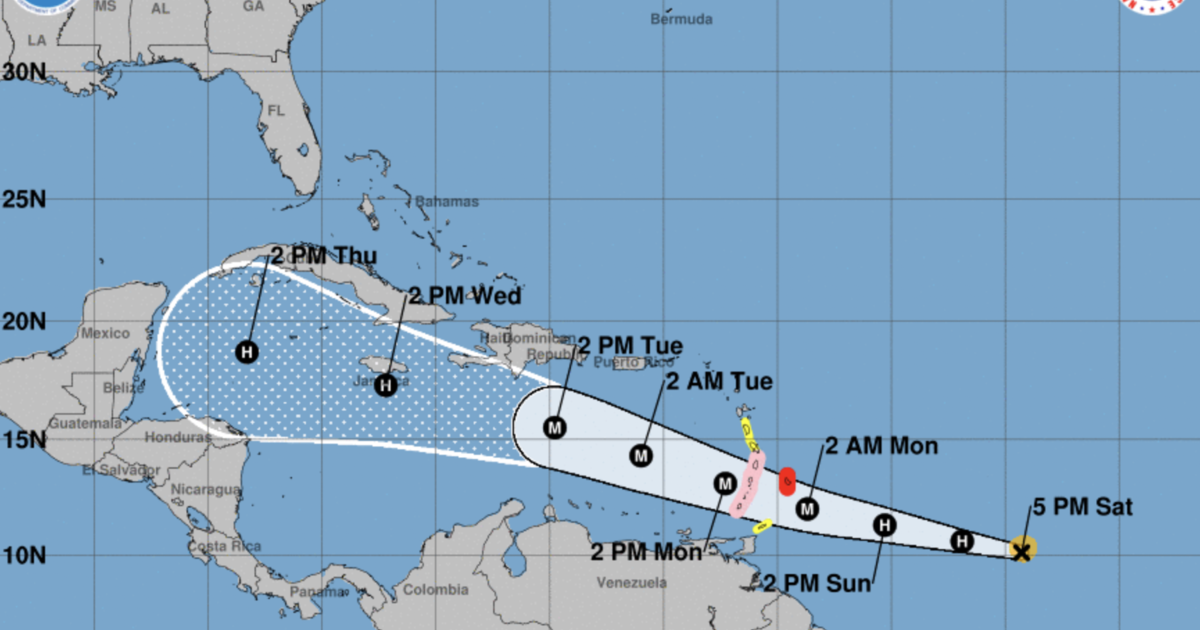Forecast Track and Intensity
:quality(70)/cloudfront-us-east-1.images.arcpublishing.com/cmg/AWHDX4GIS6ELRDN2KSNZFDACQU.jpg)
Hurricane beryl forecast – Hurricane Beryl is currently located over the Atlantic Ocean, approximately 1000 miles east of the Lesser Antilles. It is moving west-northwest at 15 mph, and this general motion is expected to continue for the next few days.
The latest forecast for Hurricane Beryl is available, and it shows that the storm is expected to continue moving west-northwest. Tropical storm beryl spaghetti models here show the potential paths of the storm over the next few days. The forecasters are urging people in the path of the storm to be prepared and to take necessary precautions.
The hurricane is expected to strengthen over the next 24 hours, reaching Category 3 status by tomorrow. The central pressure is forecast to drop to 945 mb, and maximum sustained wind speeds are expected to reach 120 mph.
Hurricane Beryl’s path is still uncertain, but forecasters are using spaghetti models to help predict where it might go. These models show a range of possible tracks, and they can help us understand the potential risks to different areas. You can find more information about spaghetti models for beryl here.
It’s important to stay updated on the latest hurricane beryl forecast, so you can make informed decisions about your safety.
Factors Influencing Movement, Hurricane beryl forecast
The movement of Hurricane Beryl is being influenced by a number of factors, including the prevailing atmospheric pressure patterns and wind shear.
The high pressure system to the north of the hurricane is steering it in a west-northwest direction. The wind shear, which is the change in wind speed and direction with height, is expected to remain low, which will allow the hurricane to maintain its strength.
Potential Impacts: Hurricane Beryl Forecast

Hurricane Beryl is expected to bring significant impacts to the areas it passes through. The most likely areas to be affected are the coastal regions, particularly those in the path of the storm’s track. Residents in these areas should be prepared for potential impacts, including:
Storm Surge
Storm surge is a major threat associated with hurricanes. It refers to the rise in sea level above the normal tide level, which can cause significant flooding in coastal areas. Storm surge can be particularly dangerous as it can reach heights of several meters, inundating coastal communities and causing extensive damage to infrastructure and property.
Flooding
In addition to storm surge, hurricanes can also cause flooding due to heavy rainfall. Torrential rains can lead to flash flooding, which can quickly overwhelm drainage systems and cause widespread damage. Flooding can also occur when rivers and streams overflow their banks due to the influx of rainwater. This can result in the inundation of low-lying areas and the displacement of residents.
Wind Damage
High winds are another major hazard associated with hurricanes. Hurricane-force winds can cause significant damage to buildings, infrastructure, and vegetation. Roofs can be torn off, windows can be shattered, and trees can be uprooted. These winds can also pose a direct threat to human life, as they can cause flying debris and downed power lines.
Power Outages
Hurricanes can also cause widespread power outages due to damage to power lines and other electrical infrastructure. Power outages can disrupt essential services, such as water supply and communication, and can make it difficult for residents to stay informed and safe during the storm.
Evacuation Orders and Safety Precautions
In areas where Hurricane Beryl is expected to make landfall, local authorities may issue evacuation orders. It is crucial for residents in these areas to follow these orders and evacuate to designated safe zones. Other safety precautions that residents should take include:
- Securing loose objects around their homes, such as patio furniture and grills.
- Stocking up on essential supplies, such as food, water, and batteries.
- Having a plan for where to go and how to communicate in case of an emergency.
- Staying informed about the latest weather updates and following the instructions of local authorities.
Historical Context and Comparison

Understanding Hurricane Beryl’s historical context can provide valuable insights for preparedness and response efforts. Past hurricanes that have impacted similar areas offer lessons learned and can help us anticipate potential impacts and vulnerabilities.
Hurricane Beryl’s forecasted track and intensity resemble those of several previous hurricanes that have affected the region. By analyzing the similarities and differences between these storms, we can better understand the potential risks and challenges posed by Hurricane Beryl.
Historical Hurricanes
- Hurricane Katrina (2005): Devastated the Gulf Coast, causing widespread flooding and infrastructure damage.
- Hurricane Sandy (2012): Impacted the Northeastern United States, bringing high winds, flooding, and power outages.
- Hurricane Irma (2017): A Category 5 hurricane that caused significant damage in the Caribbean and Florida.
These hurricanes have demonstrated the potential for severe impacts, including:
- Coastal flooding and storm surge
- High winds and structural damage
- Power outages and infrastructure disruptions
- Loss of life and property
Lessons Learned
Past hurricanes have taught us valuable lessons that can inform our preparedness and response efforts for Hurricane Beryl:
- Evacuation Planning: Early evacuation is crucial to avoid dangerous situations and reduce the risk of injuries or fatalities.
- Infrastructure Hardening: Strengthening buildings, bridges, and other infrastructure can mitigate the impacts of high winds and flooding.
- Emergency Response Coordination: Effective coordination among government agencies, emergency responders, and community organizations is essential for a timely and efficient response.
- Community Preparedness: Educating the public about hurricane risks, evacuation routes, and emergency plans empowers individuals to take proactive steps for their safety.
By applying the lessons learned from past hurricanes, we can enhance our preparedness for Hurricane Beryl and minimize its potential impacts on communities and infrastructure.